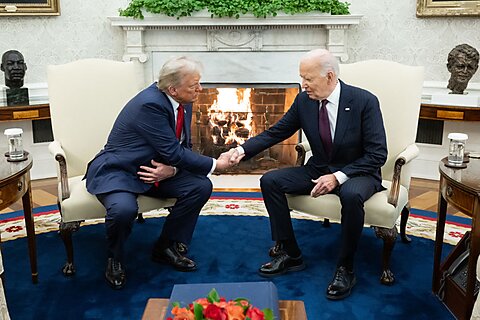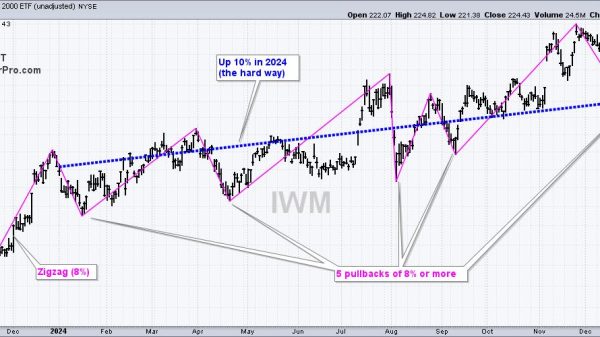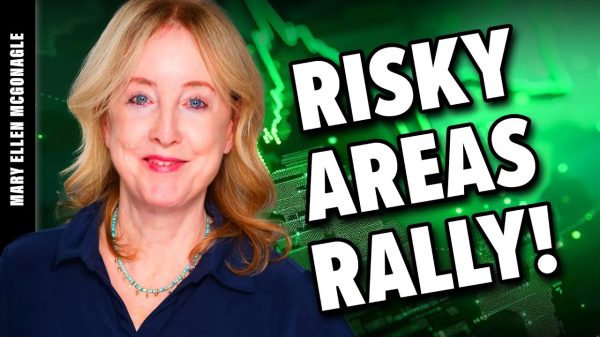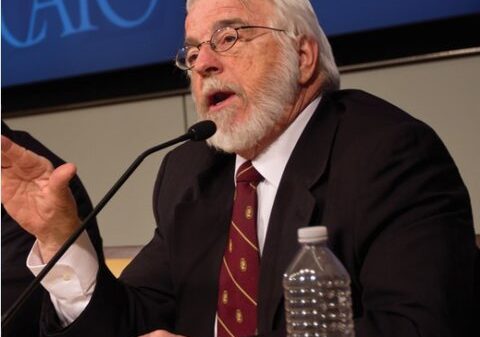Don’t say that debanking is back, because it never went away. But with close allies of the new administration focused on the issue, reform may finally be in the offing. Three basic steps are needed, the first two of which can be done in no time at all: (1) block regulators from pressuring financial providers to drop disfavored customers; (2) require government officials to report and publicly disclose actions targeting protected speech and association; and (3) dial back anti-money laundering law, “the world’s least effective policy experiment.”
Credit venture capitalist Marc Andreessen for putting debanking in the spotlight. If his aim was to raise awareness by bringing it up in a discussion with Joe Rogan and a series of X posts, then it worked. The minor backlash of doubters prompted a wave of start-up founders, crypto enthusiasts, and others with…interesting (but lawful!) financial situations to share their experiences.
It’s harrowing stuff: credit cards and ATM cards all going dead at once, losing access to one’s own money with no way to pay the bills, purposefully vague termination letters and refusal to explain, and the fear that speaking out will make one permanently unbankable. The experience is a bit like being “unpersoned” in a party-state or getting caught up in the “social credit” systems of science fiction or, as some have it, current-day China.
But it’s the United States, and we’ve been doing this for a while. It began with the rise of anti-money laundering law, which gradually transformed banks and other financial institutions into pawns of the state. That coincided with the proliferation of financial regulation and supervisory regulators’ expanding power and discretion over their charges. It speaks well of human nature, or poorly of bureaucrats, that it still took another decade or so for regulators to realize what they had: unchecked power to debank practically anyone. This was, as they say, a “strategic driver of policy outcomes”—specifically, making life hard for firearms dealers, tobacconists, and other lawful-but-officially-disfavored businesses.
That was Operation Choke Point in 2014, and now we’re dealing with “Choke Point 2.0.” The target is new: crypto, from blockchain startups to exchanges to, apparently, ordinary HODLers. But the mechanism, by and large, is the same old jawboning—that is, officials wielding the force of their authority to exert informal pressure.
The general problems with jawboning are well-understood: officials can use it to exercise extra-legal authority or to exercise their authority in inappropriate ways, and that often happens in the shadows, without accountability. That understanding points the way to reforms that address the three key elements: the extra-legal authority, which can be restricted or prohibited; the legal authority being abused, which can be cabined; and transparency and accountability. With that in mind, the policy response to debanking nearly suggests itself.
First, restrict jawboning by financial regulators through an executive order and personnel changes. As noted, the most widespread abuses don’t come from regulations, published guidance, or enforcement actions. They’re informal: regulators expressing concerns, raising eyebrows, etc. These concerns can come cloaked in many guises, like “reputational risk” and “red flags.” For closely regulated businesses like banks, a wink is as good as a nod, or a regulation for that matter, because their regulators wield so much power and have extremely broad discretion.
Drawing a perfect line to separate valid concerns about compliance from abusive requests is hard or even impossible. But two narrower fixes are easy. First, the president can issue an executive order requiring financial regulators to prohibit their personnel from requesting or encouraging the denial of services based solely on an account holder’s First Amendment-protected speech or associations, use of crypto, or status as a business in any lawful industry, including crypto, firearms, etc. Second, the president should appoint financial regulators willing to investigate ongoing and past abuses, clean house, and put new personnel on the job who won’t abuse their stations. These may be temporary fixes, but they’ll work and, over the longer term, begin to change the culture.
[For the legal nerds, yes, the executive order raises a potential issue with financial regulators being so-called “independent” agencies. But it is unclear how much that matters under recent Supreme Court decisions like Seila Law v. CFPB (2020) and Collins v. Yellen (2021). In any event, the president can and should choose appointees willing—really, eager—to coordinate with the administration and right the wrongs of their predecessors.]
Second, require all government officials and employees to disclose jawboning activities, with penalties for non-compliance. For a variety of practical reasons it’s not feasible to extend the executive order discussed above beyond the financial regulators to reach, for example, the Department of Homeland Security, the Department of Justice, White House personnel, etc. But that’s not to say that personnel outside of the financial regulatory agencies can’t misuse their power and influence to the same ends or that nothing can be done about it. It can: all executive branch personnel should be required to publicly disclose jawboning that targets First Amendment-protected speech and association. That can also be done by executive order, backed by penalties. And this wouldn’t just address debanking; it would also go a long way toward addressing the government’s role in social-media censorship.
Kristin Shapiro and I spelled out the details of how this would work in a Cato paper last year, and the thumbnail-sketch version appeared in the Wall Street Journal last month. Both pieces discuss social media censorship, but the proposal was designed to address, among other things, the sort of debanking and de-insurancing (?) abuses carried out by New York financial regulators against the National Rifle Association.
Third, turn the dial way back on anti-money laundering law (AML). AML is the legal basis for most anti-crypto pressure and actions. Banks face enormous penalties for non-compliance, and regulators wield enormous discretion over how to enforce it. As journalist Matt Levine has often described it, banks and other financial institutions effectively have a dial that they can use to turn up or down their AML (and Know Your Customer) programs, based on the pressure they get from regulators. Turn down the dial, and a bank might get hit with massive fines and even see its executives threatened with jail-time. Turn up the dial, and there will be a lot more false positives—innocent people and businesses excluded or ejected from the banking system. The pain imposed on them is enormous; the pain on regulators and the banks is essentially nil.
The problem is that, with pressure from regulators and law enforcement for “compliance” and a series of headline-grabbing fines and penalties, the dial is turned up to 11, or higher. It’s easy to understand why. The banks don’t have much choice in the matter; while they might prefer to do a bit more business, getting crossways with the government is a non-starter. For the regulators and especially law enforcement, ratcheting up AML activities is all gain, with no downside. The broader public interest, however, doesn’t get a seat at the table, and so there’s little or no accounting for AML’s costs, including the concentrated ones borne by the debanked.
Sure, money laundering is bad, but the pertinent question is whether it’s worse than AML as it’s practiced today. The best evidence says the answer is no.
Economist Ronald Pol calls AML “the world’s least effective policy experiment.” In a 2020 paper, Pol estimated that AML “helps authorities intercept about $3 billion of an estimated $3 trillion in criminal funds generated annually (0.1 percent success rate), and costs banks and other businesses more than $300 billion in compliance costs, more than a hundred times the amounts recovered from criminals.”
Keep in mind that this only accounts for compliance costs. It excludes the costs and burdens imposed on individuals and businesses from being unfairly caught up in the AML dragnet. And it excludes the incalculably large forgone benefits of businesses and business activities that do not manage to overcome the AML-compliance tax.
Before AML took hold, money laundering itself was a crime, but banks were largely treated as neutral intermediaries. AML enlists them in law enforcement without subjecting them to protections like due process that apply when the government acts directly. Extending those protections to financial intermediaries like banks would drive up costs and sap innovation across the financial sector, including in the crypto space and, ultimately, the whole economy. But that’s what would be necessary to legitimize the role they’re currently being forced to play. The far better course is to return to the older arrangement or, at the least, reform AML to narrow and clarify its scope so that there’s less discretion to be abused.
Dialing back AML will take time. Some progress can be made through executive action—including compliance reforms and instituting new enforcement policies—but fundamental and durable reform likely requires legislation. The benefits are worth it, and ending debanking is just the start.























